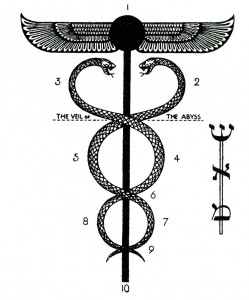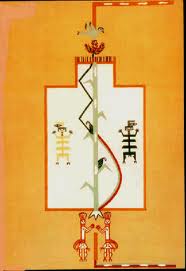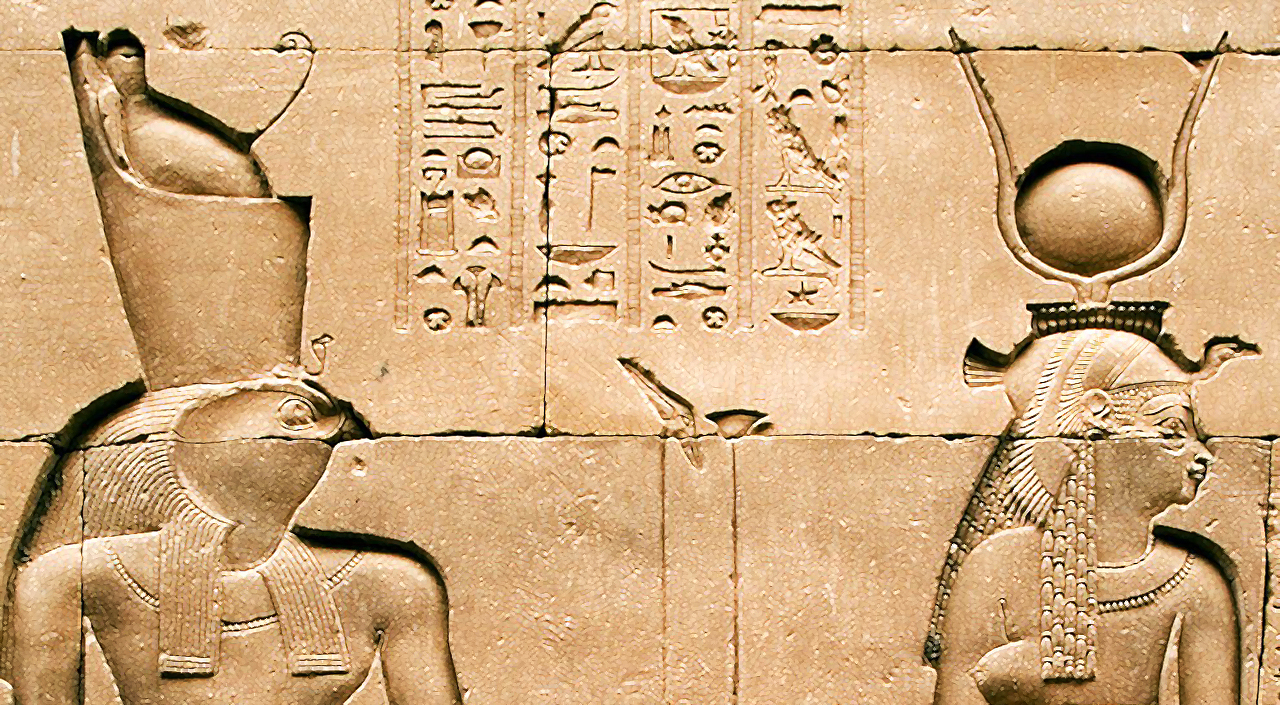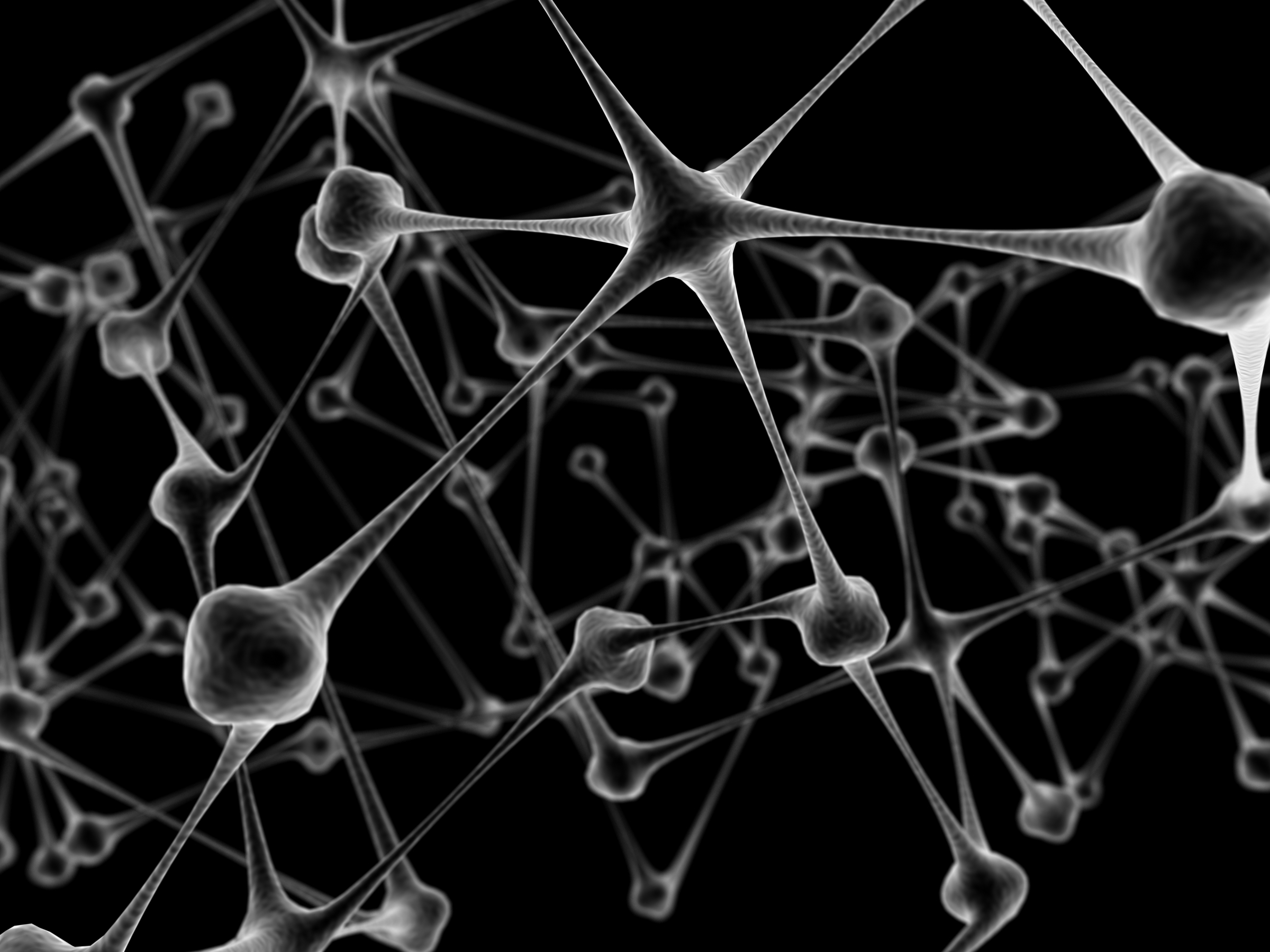Toward a Union of Opposites
Campbell’s ability to take inventory of the hero archetype’s energetic potential was dramatically expanded by his viewing its “raw material” through a “twin” lens. He could see more clearly how the inner dynamics of the hero, or twin heroes, works toward generating its own unique energetic charge. The special solar/lunar perspective the twins convey allows us a fresh look, not only at Campbell’s hero, but at the bipolarities that define every archetype—without restrictive cultural and gender distortions.
With its emphasis on an eventual transcendence of restrictive dualities, Campbell’s monomythic hero’s journey is analogous to nearly all psycho-spiritual systems. Whether the initiate be a mythic hero or heroine, yogi, shaman, or an individual seeking spiritual truth, a preliminary stage along the path involves recognizing the coexistence of polarized forces and working toward reconciling them. Many paradigms of human development, both Eastern and Western, use the emergence of solar and lunar symbols to serve as a benchmark indicating the developmental stage that the individual initiate (and, by extension, the culture) has attained. The appearance of solar/lunar symbols precipitates a great shift in the Individual or cultural consciousness, a transformation often facilitated by healing rituals and ceremonies.
 Healing rituals appear to be the key to spawning a healthier, more integrated consciousness, both within the psyche and within the culture. Thus, in our story, when Monster Slayer and Child Born of Water return with the tools needed for a healing ritual, the entire community reaps the benefits of the hard lessons learned on their journey. Solar/lunar twins in other cultures typically play a similar role in raising individual and community consciousness. In his study of the twins fathered by Asklepius, the Greek god of healing, Jungian analyst C.A. Meier states conclusively:
Healing rituals appear to be the key to spawning a healthier, more integrated consciousness, both within the psyche and within the culture. Thus, in our story, when Monster Slayer and Child Born of Water return with the tools needed for a healing ritual, the entire community reaps the benefits of the hard lessons learned on their journey. Solar/lunar twins in other cultures typically play a similar role in raising individual and community consciousness. In his study of the twins fathered by Asklepius, the Greek god of healing, Jungian analyst C.A. Meier states conclusively:
Analytical psychology shows that the appearance of a pair of identical figures, which we call a “doublet,” is as a rule associated with the emergence of material into consciousness. Emergence into consciousness is closely related to healing.10
Mircea Eliade has similarly described the heroic consciousness-raising journey of the Zuni twins, suggesting that it parallels the biological process from conception to birth: “[The Twins] progression … is homologous with the emergence of man. [They] lead embryonic humanity up to the threshold of consciousness.”11 Analytical psychologist Edward Edinger considers the role of twins pivotal in our Judeo-Christian tradition as well. His research of Old Testament twins, Jacob and Esau, moved him to assert that “…the individuated ego is destined to be born a twin.”12
The emergence of lunar-masculinity into men’s consciousness may be the first step toward healing the solar/lunar split that has characterized the traditional Western male psych. Up to now, Western culture has equated only the solar-masculine principle with masculinity, consigning the lunar-masculine principle to impotence and oblivion. Lunar-masculine attributes, those spontaneously instinctual, reciprocal, and affectionate emotional behaviors, have long been perceived as a potential threat to a patriarchal order based on strict division of masculine and feminine behaviors. In our day, they have usually come to be regarded with suspicion as “effeminate” or as “gay.”
Our traditional ideal of a male hero has contributed much to maintaining and fostering conflict in Western culture. The solar-masculine principle is not without value, but it has become notoriously inflated in our society. The ongoing “men’s movement” attests to our cultures growing demand for an alternative to manliness measured in terms of physical strength and economic earning potential. Attempts to address this problem on a cultural level have generally not been successful. Proposed solutions to our outmoded notion of masculinity, largely taking the form of injunction and theory, have consistently failed to capture the imaginations and psychological energies of men. Men continue to be resistant to alternative styles of manliness which encourage them to become “more like women,” with the implication that their masculinity is shameful or suspect.
A solution that would not in itself wound involves the recognition that the style of masculinity embodied in the solar-masculine principle represents only half of the full masculine potential: “The sun must be conceived to be a manifestation of only one aspect of the life/death principle, which is more fully symbolized in the moon: in the moon-bull attacked by the lion.” Campbell likens the lone solar hero to the Trickster/Transformer archetype, which has a distorted vision of its capacity for power:
The archaic, Paleolithic type of Trickster and Transformer, who arrives without a brother, alone, with no sense either of limitation or of complementarity, is in North American mythology generally an incarnation of solar power, sheer and uncontrolled. And yet, unknown to himself, he is subject here to the conditions of space and time—which he did not create. And he may appear, consequently, either as invincible, or as a fool. (Earth 2 175)
Simple recognition of our deeply ingrained “solar” distortion of masculinity will not automatically rid us of its influence. Similarly, the resurrection of the lunar hero into consciousness will not by itself solve the problem. Psychologically, when a man brings his suppressed lunar-masculine energy into consciousness, it tends to become inflated to fill the “black hole” that his ego has so long endured. A recent upsurge of overly inflated lunar-masculine energy accounts for what poet Robert Bly has called a preponderance of “soft males,” who radiate sensitivity but lack decisiveness and resolve.13
Bly and others of the current men’s movement advocate our use of healing rituals to bring men toward a mature experience of manhood that incorporates the full range of masculine behaviors.
Campbell’s “Commentary” on Where the Two Came to Their Father offers men the opportunity to imaginatively participate in a masculine initiation designed to heal their solar/lunar imbalance. A psychological interpretation reveals the “step-by-step” process toward realizing the fourfold nature of the masculine Self. Encoded in the symbolic language of the unconscious mind, the eighteen sand paintings present a series of figurative ways in which the unity of the male ego may be continuously tested, once it has become conscious of its twin nature.
Men may learn from the lunar hero healthier ways of handling difficult situations that may once have provoked their anger. For example, in one variant of the Navajo myth, Child Born of Water admonishes his brother for being too rash in trying to resolve an argument with the Coyote. Monster Slayer becomes frustrated, crying “Bring me Coyote, even if you have to use force!”; Child Born of Water patiently counters him, “It is no use to be angry with him; angry words and shouting will not influence him. Offer him some gift and perhaps he will come in and help you.” Monster Slayer considers his wise advice and agrees, “You are right. We will do as you say.”
Our culture’s need for the tempering influence of the lunar-masculine energy runs deep. In the last several volumes of his posthumously published Historical Atlas of World Mythology, Campbell returns to the motif of the twin heroes to explore its prevalence in indigenous cultures. He had long been sensitive to the imbalance in many cultures that tend to inflate either the solar or the lunar aspects of the central Hero archetype, and clearly he felt there was still much to be learned from indigenous cultures, where solar and lunar aspects of the hero emerged as twins. His awareness of the fundamental “twin” nature of the male hero also furthered his understanding of how the masculine experiences his opposite, the feminine. If men remove the “feminine” gender label and bring “Luna” out of the unconscious into masculine consciousness, it changes the experience of both the feminine and of the unconsciousness.14
 Another variant of the Navajo myth again offers an example of how the resurrected lunar- masculine energy may bring men toward a right relationship to the feminine. Near the end of the twin heroes journey, the Sun is trying to convince the reluctant Changing Woman to move to a Hogan in the west that he has built for her, and the solar hero, Monster Slayer, assures his father that he will force his mother to move. The lunar Child Born of Water intervenes in defense of his mother, stating that no one dominates her, that she must do her own speaking, is her own mistress. But he agrees to convey Monster Slayers wishes to her and to plead for him.
Another variant of the Navajo myth again offers an example of how the resurrected lunar- masculine energy may bring men toward a right relationship to the feminine. Near the end of the twin heroes journey, the Sun is trying to convince the reluctant Changing Woman to move to a Hogan in the west that he has built for her, and the solar hero, Monster Slayer, assures his father that he will force his mother to move. The lunar Child Born of Water intervenes in defense of his mother, stating that no one dominates her, that she must do her own speaking, is her own mistress. But he agrees to convey Monster Slayers wishes to her and to plead for him.
Seeing the feminine in possession of her own sovereignty was a hallmark of Campbell’s work from the start. Long before it was mandated by the feminist movement, Campbell consistently valued the feminine perspective, a practice which has since earned him the praise of feminist scholar Christine Downing:
It is to Campbell’s great credit—from my feminist perspective—that in his history of mythology he accords an important place to the role played by the goddess, and that he did so already in the first volume of The Masks of God [sic] series (published in 1959) long before the revival of interest in the goddess among contemporary feminist scholars.15
Campbell’s receptivity to both solar and lunar aspects of the feminine crops up throughout his expositions of both female and male mythologies. He explored many myths of the goddess characterized by the androgynous union of “masculine” and “feminine” principles represented by Sun and Moon. Not equating the feminine with the lunar, he could see in the symbolic goddess figure a combination of paradoxical solar/lunar forces, comparable to the those found in descriptions of many male divinities. The incorporation and ultimate transcendence of both solar and lunar aspects have often been designated earmarks of epic male figures, such as Osiris, Dionysus, and the Christ, each of whom has been described as having attained “a superior stage of psycho-spiritual development since in androgynous and sacrificial nature they incorporate both the solar and lunar modes and transcend them in death.”16
The “mythologically confusing” assignment of different gender labels in different cultures did not prevent Campbell from being receptive to the deeper mysteries of the solar/lunar dialectic in other traditions. His transcendent solar/lunar vision allowed him to see beyond gender biases into the energies of the psyche that permeate all psycho-spiritual traditions. For example, his grasp of the axial solar/ lunar dialectic made it possible for him to develop an insightful comparison of the Navajo “Pollen Path” and the Kundalini chakra system in The Inner Reaches of Outer Space (1986). In both systems, Campbell shows the primary task to be a reconciliation of the counterpoised solar and lunar energies. The Navajo initiate masters this stage through participation in the sand paintings that accompany the rituals. For the yoga, solar/lunar consciousness is achieved through meditation. Campbell speaks of a white or ida aspect, which is “associated with the cool, ambrosial, ‘lunar’ energies of the psyche; and a red, called pingala…, whose energy is ‘solar, fiery,’ and like the solar heat of the tropics, desiccating and destructive.” The yoga’s prime goal is to harmonize these contrary energies (Image 331). The solar/lunar dynamic occurs in the psyche whether or not one is conscious of it. Creative individuals, such as artists, poets, and shamans, often experience a transcendence of the solar/lunar duality as an initial part of their ritual process. Throughout his work, Campbell, documented repeated instances of solar and lunar energies coming together to signify a critical stage of transformation in many disciplines. A complete survey of the solar/lunar counterplay in Campbell’s writing would extend far beyond the reaches of this essay. We might herein at best only hint at the far-reaching implications Campbell’s solar/lunar vision may have for masculinity, and ultimately for our collective cultural consciousness.
We are greatly indebted to Joseph Campbell for having recovered our vision of the male hero, which had suffered a long neglect in the wake of rapid changes advanced by scientists and rationalists of the nineteenth century. His contribution to our revaluing an individual’s subjective experience is unmatched in the literature and psychology of the twentieth century. As we move into the next century, the ongoing breakdown of patriarchal mythologies will inspire us to resurrect even more universal, archetypal creation motifs to incorporate the variety of viewpoints that comprise our new world. It is my hope that the Twin Heroes, Campbell’s central paradigm of balancing solar and lunar energies, will receive more attention in the future as we follow Campbell and look for archetypal motifs that amplify and reinforce the complementary, compatible aspects of our human nature.








